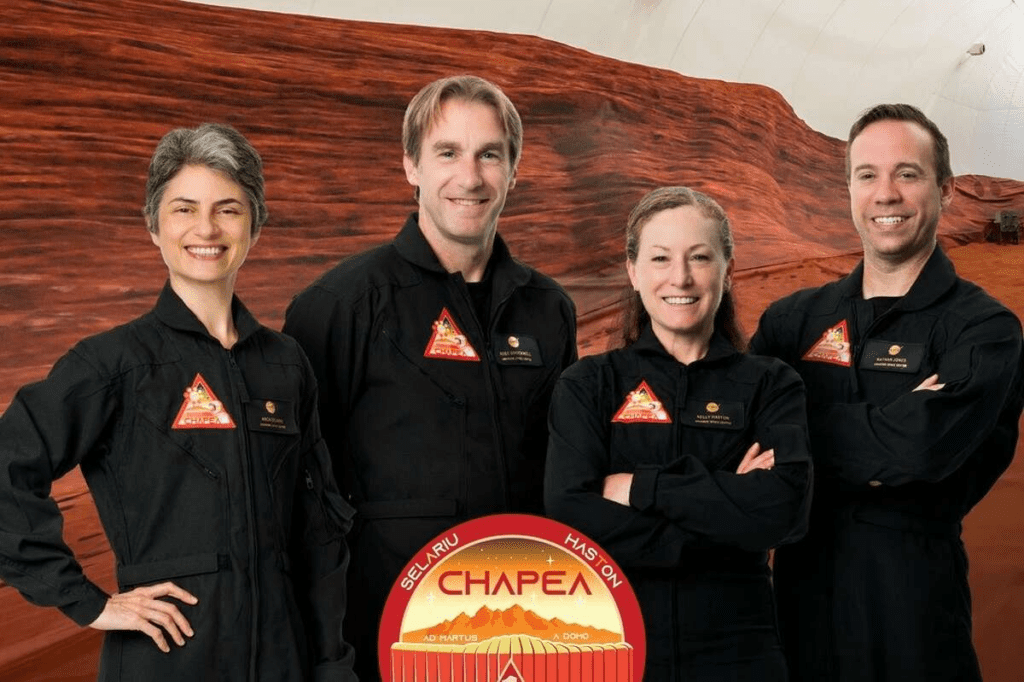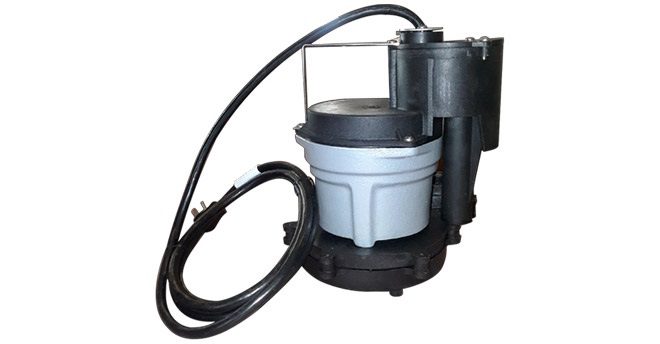Imagine being locked in a Mars simulator for a year with a chance to contribute to the future of space exploration. Well, that’s precisely the opportunity NASA has presented to a group of volunteers. The space agency is paying each participant $60,000 for their dedication and sacrifice during the 378-day mission, which aims to simulate the experience of living on Mars.
During the mission, the crew members will be housed in a 3D-printed, 1,700-square-foot habitat, designed to replicate the conditions of the Red Planet. The purpose of this undertaking is to study the challenges astronauts might face during extended stays on Mars and gather valuable data to better prepare for actual missions in the future. The experiment has already attracted the attention of space enthusiasts, who eagerly await the outcomes and insights gained from this unique opportunity.
Remember, bolding text can be a powerful tool to highlight key points in a piece of writing, but it’s also important not to overuse it, as too much bold text can become visually overwhelming and may lose its impact.

The Mars Simulator Project
NASA is funding an exciting project where four individuals will be paid $60,000 each to live inside a Mars simulator for a year. The aim is to study what it would be like to live on the Red Planet and gather valuable data for future missions.
The Mars Dune Alpha is a 1,700-square-foot habitat located at NASA’s Johnson Space Center. Designed to mimic the harsh and challenging environments of Mars, the participants will have to adapt to living in confined spaces, relying on limited resources, and facing simulated challenges that astronauts might encounter on Mars. The simulation will last for a total of 378 days.
During their stay in the Mars simulator, the volunteers will be required to spend their time conducting research, maintaining their habitat, and even participating in virtual reality missions. They’ll be paid around $10 an hour, which amounts to $60,000 each for their commitment to this groundbreaking experiment.
Being part of this simulation entails making sacrifices, like being away from friends and family for the entire duration. The volunteers will need to form strong bonds with their fellow crew members, as teamwork and communication are essential for the success of this project.
The Mars Simulator Project is a significant step forward in NASA’s exploration of Mars, as it gives researchers vital information to refine strategies for future manned missions. With this innovative project, a manned mission to the Red Planet might not be too far off in the future.
Participants and Compensation
Crew Members that will do this are Anca Selariu, Ross Brockwell, Kelly Haston and Nathan Jones
In an effort to further understand the challenges of living on Mars, NASA has initiated a unique project that involves locking volunteers in a Mars simulator for a year. These participants will experience a simulated Martian environment and gather valuable data for future space exploration.
The lucky individuals selected for this groundbreaking mission will receive compensation for their time and dedication. In fact, NASA is offering each volunteer a “martian wage” of $10 per hour for all waking hours. With a total of 378 days in the mission, this adds up to a cool $60,000 for each participant.
While some may argue that $60,000 might not seem like a huge sum considering the sacrifices made, it’s important to note that these individuals are not only contributing to scientific research, but also becoming pioneers in space exploration. Their commitment and resilience during the simulated Martian experience will provide invaluable insights into the physical and psychological challenges faced by astronauts on long-duration missions.
Given the nature of the project, it’s understandable that participants are expected to be highly motivated individuals with a passion for space exploration. The selection process for these volunteers is likely rigorous, ensuring that only the most suitable candidates are chosen to partake in this extraordinary journey.
In the end, the compensation received by these brave volunteers goes beyond just monetary value. They’re contributing to the future of space exploration and providing vital knowledge that could pave the way for Mars colonization. Moreover, they’ll earn a place in history as part of an elite group that dared to take on this extraordinary challenge.
Qualifications and Roles
In the Mars Simulator project, participants come from a variety of backgrounds to help create an interdisciplinary team. These individuals are selected based on their expertise in various fields, so their roles can contribute to the success of the simulated mission.
Engineers, such as structural engineers, play a vital role in designing and maintaining the habitat, as well as troubleshooting any technical issues that may arise. They ensure the structure is both functional and safe for the inhabitants. Scientists, including research scientists, provide essential insights into the feasibility of a real mission to Mars. Their knowledge in fields such as geology, chemistry, and physics provides the groundwork for understanding the Martian environment and potential resources.
Emergency medicine physicians, on the other hand, are responsible for the health and well-being of the crew. They would manage any medical emergencies and provide preventive care during the simulation. Alongside them, microbiologists examine the potential effects of microorganisms on the Mars mission, focusing on areas like life support systems, food safety, and crew health.
Astronauts are, of course, a crucial part of the team, as they possess the necessary skills and experience to simulate life on Mars. Their roles include carrying out experiments, maintaining equipment, and conducting extravehicular activities.
Finally, specialists in various fields may also be part of the crew, depending on the focus and objectives of the simulation. These individuals bring unique expertise to support the efforts of engineers, scientists, and astronauts in creating a realistic environment that mimics the challenges a Mars mission could face.
Overall, the diverse backgrounds and skills of the Mars Simulator participants contribute to a comprehensive understanding of the challenges and solutions required for a successful Mars mission, all while offering the opportunity to earn $60,000 for a year inside the simulation.

Simulated Habitat Environment
In an effort to study life on Mars, NASA has created a simulated Mars habitat where four individuals will spend a year in isolation. This unique experience comes with a payment of $60,000 for each participant.
The habitat itself measures 1,700 square feet and is located at NASA’s Johnson Space Center. Designed to closely resemble the Martian environment, the simulated habitat is equipped with features to make the experience as realistic as possible. This includes 3D-printed elements, an array of mission activities, and simulated spacewalks.
Participants in the program will also be involved in various tasks throughout their stay. Some of these activities include robotic operations and even growing plants to better understand the challenges that may come with living on Mars. The hope is that by immersing these individuals in this controlled environment, NASA can gain valuable insights into the physical and psychological challenges of an extended Mars mission.
During the year-long experiment, the team will face various scenarios designed to test their problem-solving skills and their ability to handle the isolation. By exposing the participants to these conditions, researchers hope to better prepare future astronauts for the demands of exploring and colonizing Mars.
In the end, the simulated habitat environment serves as a critical step for NASA in their quest to explore the Red Planet. By studying the experiences of these four volunteers, NASA aims to glean important information about how we, as humans, can adapt and thrive in an entirely new world.
Test Objectives and Challenges
The main objective of this yearlong Mars simulator experiment is to study the effects of isolation on a small crew and to better understand the unique challenges that astronauts might face on a real mission to Mars. This experiment is considered crucial in the preparation for future crewed missions to the Red Planet.
One of the numerous challenges the crew will face is maintaining their physical and mental health during the simulation. They will need to perform regular exercise and keep up with their daily research tasks while confined to the 1,700-square-foot habitat at the NASA’s Johnson Space Center in Houston. Spacewalks will be simulated, giving the crew an opportunity to practice these vital tasks.
Another important aspect of the study is the examination of the crew’s ability to cope with any equipment failure. Technical issues are inevitable on a Mars mission, and having the ability to adapt to these situations is crucial. This simulation will test their capabilities in dealing with these unexpected eventualities.
In addition to the work-related challenges, the crew must also learn to adapt to the communication delays that will be prevalent during a real Mars mission. Given the distance between Earth and Mars, communication can be delayed by anywhere from 4 to 24 minutes. This might lead to feelings of homesickness and disconnection from their family, making relationships among the crew members more important than ever.
To study the impact of these delays on the crew, the simulation will feature communication protocols that mimic the anticipated delays experienced in a real Mars mission. This will help evaluate the feasibility of carrying out complex robotic operations with limited guidance from Earth.
In this confined environment, recreation will also play a crucial role in ensuring the well-being of the crew. The participants will have to get creative and come up with activities that will help them unwind and maintain a cohesive unit.
The findings from this Mars simulator experiment will provide valuable insights into the unique challenges faced by astronauts during a long-duration mission to Mars. And with NASA currently paying $60,000 for the participants’ commitment and sacrifice during this simulation, the research findings might prove to be worth every penny.
Routine Tasks and Experiences
In NASA’s Mars simulator, participants go through a variety of tasks and experiences designed to replicate the conditions they would face on the Martian surface. One of the critical tasks is growing crops in a controlled environment, as this would be a vital skill for sustaining life on Mars.
Another important routine is regular habitat maintenance. Participants need to ensure that their living quarters and workspace remain functional and in good condition. This includes general upkeep, repairs, and addressing any unforeseen issues that may arise during their stay inside the simulator.
The health and wellbeing of the crew are of utmost importance. The astronauts follow a strict exercise regimen to maintain their physical fitness and counter the effects of staying in a confined space for an extended period. Furthermore, the crew members’ mental health is equally important, and they have regular check-ins with a commander and support personnel to discuss any concerns or challenges they may be experiencing.
Performing simulated spacewalks is another essential aspect of the program, as it helps prepare the participants for actual Mars exploration missions. They suit up in a Mars-like environment and carry out various tasks that would be required on the real Martian surface.
To ensure the success of this year-long simulation, there are certain requirements the participants need to meet. They must possess the necessary skills, experience, and knowledge to carry out the tasks and responsibilities associated with a Mars mission. Additionally, they must demonstrate excellent communication and teamwork abilities, as these are vital for the overall functioning and efficiency of the crew.
In this casual and realistic setting, the participants spend their days carrying out tasks similar to what they would experience if they were actually living on Mars, helping prepare them for any future exploration missions.
Mission Outcome and Impact
The year-long Mars simulation has the potential to significantly impact humanity’s approach to space exploration. By locking participants in a Mars simulator for a year, NASA aims to study the effects of isolation, confinement, and other challenges associated with a potential human mission to Mars.
The mission’s outcomes will provide valuable insights into the psychological, physiological, and social aspects of extended space travel. This data will not only inform future Mars mission planning but also contribute to a better understanding of how humans cope in extreme environments. As space exploration continues to develop, this mission could serve as a turning point in preparing humans for the journey to the Red Planet.
Additionally, the simulator will enable the participants to test out various technologies and protocols that might be used during a real human mission to Mars. Lessons learned from the simulated environment will help improve the efficiency, safety, and effectiveness of future missions, ultimately advancing our knowledge of deep space exploration.
In conclusion, the mission is more than a simple experiment; it will bring us one step closer to realizing the potential of space exploration and ultimately benefit all of humanity.







